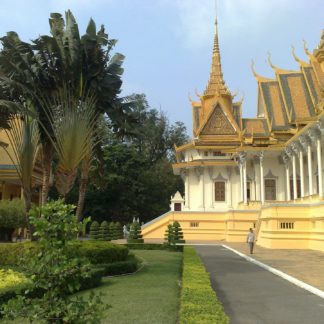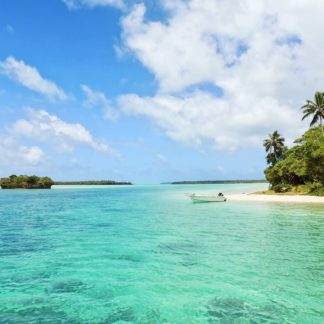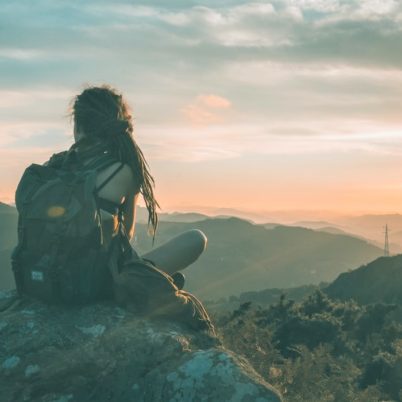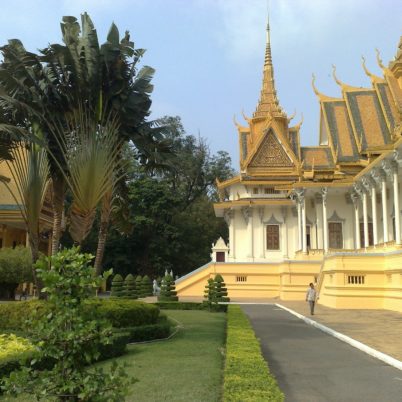A guide to exploring the Temples of Angkor
The Angkor Archaeological Complex is Cambodia’s national treasure. The site is home to the world-famous Angkor Wat and many other beautiful temples, most of which were constructed almost a thousand years ago. To this day, the Angkor Wat temple of Cambodia, the most famous temple in the complex, remains the largest religious monument ever built. Visiting the Temples of Angkor will, therefore, be the highlight of your trip to Cambodia. The only question is, how do you visit the temples?
Located just north of Siem Reap, Angkor used to be the capital of the Khmer Empire. The city along with its temples was overgrown and lost to time, only to be rediscovered by the French in the last century. Today, the excavated temples, palaces, statues, and other intrigues span an area larger than Paris. So, we can safely say that visiting the Temples of Angkor and checking out the main attractions are, at the very least, a day-long endeavor.
You can find out more about the great story behind Angkor’s temples in our blog. The old Khmer artisans have to be commended as the Angkor endeavor was not just a feat of skill, it was one of logistical complexity as well. A feat, we can safely say, they succeeded in.
Look at a Two Week Cambodia and an One Week Cambodia itinerary
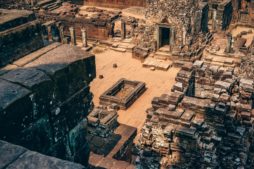 Despite the ruins, the sheer precision and logic is evident while exploring this architectural wonder.
Despite the ruins, the sheer precision and logic is evident while exploring this architectural wonder.
How to visit the Temples of Angkor?
Getting there:
There are several ways you can visit the temples. Siem Reap, however, remains your gateway to Angkor. From Siem Reap, you can take a Tuk Tuk, a rental car with driver, or a tour bus for visiting the Angkor sites.
A tuk-tuk, depending on where you stay, will cost you anywhere between USD 15 – 35 (Depending on the circuit you pick. More on this below). They may charge slightly higher during Christmas or New Year. We recommend traveling by tuk-tuk as it offers much more flexibility and you also support a local who is dependent on tourism for income.
You can also opt to visit the temples on a bicycle or rent an e-bike for a day. E-bike rentals range around USD 11 for the day. This is a great eco-friendly way of exploring these gorgeous temples of Angkor.
There are also organized bicycle tours around the temples. You can enroll in one and visit Angkor with a group of people. However, keep in mind that Cambodia, being a tropical country, can get very hot and very humid at noon. Additionally, the Angkor Wat temple, being the closest monument, is already 9 km away from Siem Reap, so your fitness will be tested to a degree if you choose this option.
 Tuk Tuks or Rickshaws are the most commonly used mode of transport when it comes to exploring the temples of Angkor.
Tuk Tuks or Rickshaws are the most commonly used mode of transport when it comes to exploring the temples of Angkor.
The Entry Pass:
There are three different types of passes available to you. You need these passes to get access to the Temples of Angkor.
1 Day pass: 37$ (if you buy after 5 pm, then valid for next day)
3 Day Pass: 62$ (valid for 10 days so it is not necessary to do it on 3 consecutive days)
7 Day Pass: 72$ (valid for 1 month)
You can visit the main attractions of the Angkor temples in one day. This will include The world renowned Angkor Wat temple of Cambodia and its nearby temples. If you only want to spare a day to visit Angkor then a 1-day pass will work fine for you.
However, if you want to explore the off the beaten path temples, you need the 3-day pass. Angkor is not just the Angkor Wat. The city is home to many such spectacular works of art. If you really want to explore the sites more closely, we recommend the 3-day pass.
The 7-day pass is only viable for those who want to explore every nook and cranny of this ancient city. If you want to visit some of the truly remote temples in the complex, and also spend an extended period of time at each structure, then the 7-day pass would be ideal.
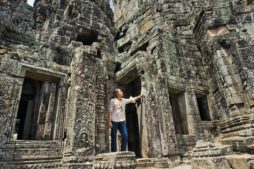 Exploring the temples of Angkor, going off the beaten path and uncovering some gorgeous hidden gems, is only possible on a 7 day pass. It is an opportunity to explore the minute details of every site you visit.
Exploring the temples of Angkor, going off the beaten path and uncovering some gorgeous hidden gems, is only possible on a 7 day pass. It is an opportunity to explore the minute details of every site you visit.
Traveling in Angkor – The Grand Circuit and The Small Circuit
The Grand Circuit and the Small Circuit are the two routes to travel around the Angkor Archaeological Complex. The Small Circuit will take you to the Angkor Wat temple and the nearby Angkor Thom temple. The trip will also take you to some of the nearby temples around these two. The Small Circuit trip in a tuk-tuk will cost you around USD 15 -25.
The Grand circuit loops around most of the distant temples of Angkor. A trip on the Grand Circuit costs the same as the Small Circuit. But try to combine these two on the same day and you may require to pay up to USD 35 for the entire trip. You can still try visiting both main attractions and distant temples on the same day, but we recommend against it as you can take the grand circuit on your second day and the small circuit on the first.
Which circuit you pick depends on the time you want to spend at Angkor as well as the amount of time you spend at each temple. We recommend the small circuit for a 1-day pass. The Grand Circuit is recommended in case you visit on the second day (assuming you bought the 3-day pass).
 If you opt for the small circuit route, besides visiting the Angkor Wat temple, you will also visit Angkor Thom, situated in close proximity to Angkor Wat.
If you opt for the small circuit route, besides visiting the Angkor Wat temple, you will also visit Angkor Thom, situated in close proximity to Angkor Wat.
The Angkor Code of Conduct
As spectacular as the complex is, at its core, it remains a place of worship. As such, it is necessary to maintain the required decorum while you are visiting the temples of Angkor. Firstly, the dress code dictates that you cover your shoulders and your legs when you visit these temples.
Drones are not allowed in the Angkor complex. You are free to take photographs and videos though. Make sure that you don’t litter when you are at the temples. Remember, leave nothing but your footprints behind!
It would be best if you don’t touch the reliefs and statues around the temples. What may look like a sculpture to you may be of significant religious/archaeological importance to someone else.
The monks that you may see around the temples are to be respected. They will not interfere with your visit to the temple. And neither should you interfere with them as they carry out their rites and meditations.
This goes without saying, but never lose your pass when you are at the temple. Don’t forget your pass at the hotel either. There are regular checks around the complex. So always keep your pass handy.
 A monk sitting away from tourist hot spots, writing in peace at a temple in the Angkor complex.
A monk sitting away from tourist hot spots, writing in peace at a temple in the Angkor complex.
How to avoid crowds at the temples of Angkor?
The Angkor temples attract tourists in their droves every year. This is especially evident during the winter months as the temperature of Cambodia becomes much mellower. This makes the temples very crowded and it may kill the vibe on your visit.
Fear not, as we have a few tips for you that will help you avoid some (or most if you’re lucky!) of the crowds. Follow these tips for a much more relaxing tour of the Angkor temples.
- Make sure that you buy your pass one day ahead. If you buy your one-day pass after 5 pm, then it is valid for use on the next day. This way you won’t waste any time in the long lines of people waiting to buy passes.
- You should ideally opt for a 3-day pass. This way you won’t have to rush around the place to visit the temples. With this option, you can visit the main temples of the Small circuit on the first day, followed by the distant temples on the Grand Circuit on the following day. Trust us, Angkor is worth the money!
- Carry your breakfast with you. Keep in mind that when you are visiting the Angkor Wat temple of Cambodia, for sunrise, you are in for an early start to the day. So early in fact that many tourists come back to their hotels for breakfast. Carry your food with you and you can keep exploring the complex.
- The sequence that the typical tourist follows is Angkor Wat at sunrise, then Bayon and Ta Prohm. Do the opposite. Arrive at Ta Prohm first around 6:30 am (opens between 7:00 and 07:30 am). The place should be relatively empty as most of the people are at Angkor Wat temple.
- If you can afford to miss the sunrise at Angkor Wat, then you should visit it in the afternoon, as the bulk of the tourists will have moved on to many of the other attractions.
- If you choose to visit Angkor Wat at sunrise, try entering from the east gate as opposed to the west gate from where most people enter. Once in, instead of going to the larger lake, try visiting the smaller lake on the right. Photographs taken here turn out the same as they do on the other side. Alternatively, you can skip sunrise at the lake and head right in towards the innermost sanctum of Angkor Wat, the most holy place in the Angkor Wat temple of Cambodia – the Staircase to Heaven. The line to visit this sanctum becomes ridiculously long after sunrise, so, we recommend you visit this place first.
- If photographs are not your main objective, then go to one of the libraries behind the lake. You will see the backs of most of the tourists, but you will get a sweeping view of the entire temple.
- When visiting the Bayon temple, make sure you are early. Ideally, right after you have visited Ta Prohm or Angkor Wat. Bayon is situated within the Angkor Thom complex which is a large enclosure that used to be a city. So, there are plenty of places to explore around here. More importantly, there is a lot of space for the crowd to thin out.
- Some of the temples around Angkor Thom like the Ta Keo temple are almost empty in the early morning. The architecture in this temple is just as intricate and beautiful as it is elsewhere. Another such temple is the Bantay Kdei.
- Most people choose to visit Phnom Bakheng for its spectacular sunsets. You should instead visit Pre Rup. The climb to the top of the structure is a little bit challenging but it offers a sweeping view of the nearby jungles and rice paddies. This site is just as amazing, if not better than Phnom Bakheng. The Southern Gate is another place to enjoy a great sunset.
- There are some amazing temples that are in neither the Small nor the Grand Circuit because of their distance from the main routes. These temples are usually empty. But what is amazing about these temples is that the architecture and natural beauty of these structures are just as spectacular as many of the other attractions at Angkor. These locations include Bantey Srei – a sandstone marvel some 35 km north of Siem Reap. There is also the ancient capital city of Hariharalay – a site that predates Angkor. This place has its own unique intrigues for you to explore.
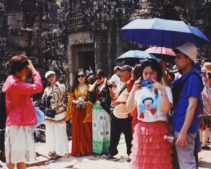 The Angkor Wat temple is usually most crowded early morning at the time of sunrise. However, there are several ways to avoid these crowds and explore the temple in peace.
The Angkor Wat temple is usually most crowded early morning at the time of sunrise. However, there are several ways to avoid these crowds and explore the temple in peace.
To sum it up
The general idea, while exploring the Temples of Angkor, is to move in a direction opposite to the crowds. Or if there is an equally beautiful location available, then visit that place instead of visiting where the crowd goes. But remember, Angkor is a special place. Serenity can be found within these temples even when they are at their most crowded. This is the secret to the irresistible charm of the Angkor Wat Temple of Cambodia.
You can check out our blog for more information regarding some of the best temples to visit in the Angkor complex and their lore and heritage. If you’re visitng Cambodia and are looking to explore more than just the temples of Angkor, we can help. Simply hit the Plan Your Trip button and together, we can plan out your Cambodian adventure. A blend of Cambodia’s rich history and stunning architectural monuments along with exploring the cities of Siem Reap, Phnom Penh and maybe even relaxing by the gorgeous beach towns or lush green countryside.
helping you travel your way
We provide a helping hand to independent travellers who need assistance with planning and booking their trip. The primary goal is to turn your dream holiday into reality.


